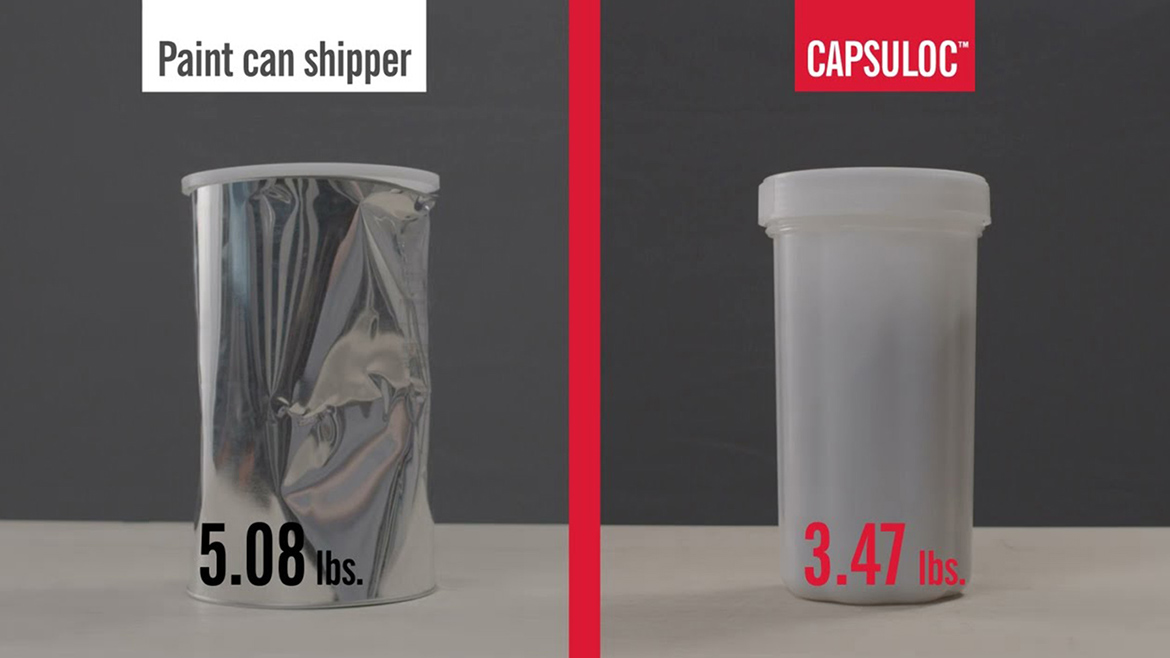Distribution
Transforming Your Business with Hazmat Solutions
A convergence of market trends, business needs, and material advancements have driven the development of innovative hazmat packaging options.

Packaging isn't just about putting products in a box.
It's a key component of your operations that touches every part of the supply chain. From logistics efficiency and customer satisfaction to sustainability and safety, packaging plays a pivotal business role that goes far beyond its primary function.
And, because packaging is vital to so many aspects of daily business operations, change … can be intimidating. Plus, the dangerous goods (DG) / hazardous materials (hazmat) industry hasn’t exactly been known to be early adopters when it comes to packaging innovations that truly make a difference.
That isn’t to say DG companies don’t both want and need innovation. New hazardous goods continue to enter the supply chain, regulations continue to evolve, and customer expectations and demands continue to grow. Organizations need packaging that addresses those needs, among others.
Fortunately, innovative DG packaging solutions are available that improve efficiency, safety, and sustainability throughout the supply chain.
Barriers to Progress: Overcoming Innovation Challenges
While more innovative packaging has been needed in the hazmat industry for years, several hurdles have kept it static.
- Reliance on traditional packaging: Many businesses rely on conventional packaging due to its established safety and compliance track record. Consequently, businesses often choose to stay within their comfort zone, leading to missed financial opportunities.
- A narrow view of packaging: Packaging is frequently seen merely as a "box.” An additional operational cost. However, this leads to packaging being overlooked during product development and strategic planning. This oversight can result in excessive spending on packaging and necessitate product redesigns to ensure compliance with existing packaging.
- Change management challenges: Adopting new solutions can be difficult, particularly when companies aim to minimize disruptions during the transition. As a result, businesses hesitate to change their packaging unless absolutely necessary, even when there are substantial financial and operational advantages to be gained.
- Low prioritization: Increasing customer demands, talent shortages, and other urgent supply chain challenges have companies concentrating solely on ensuring timely product delivery. This tight focus often prevents businesses from exploring alternative packaging solutions that could improve their operations and, in turn, benefit their bottom line.

DGeo’s Obexion AG containers, powered by AkkuGrain®, provide safe, reliable, reusable lithium battery transport and storage. Courtesy of DGeo
Market Trends and Demands Fueling the Adoption of Modern DG Packaging
Despite longstanding barriers, significant advancements in DG packaging have emerged to overcome them.
A convergence of market trends, business needs, and material advancements have driven the development of innovative hazmat solutions. These advancements include:
- Rethinking processes to drive operational efficiency: Businesses want to accelerate their fulfillment processes, but identifying cost-effective solutions can be challenging. This is where innovative packaging solutions come into play. Whether the packaging is designed to reduce filling, packing, or shipping times, it can be a big win for businesses. For instance, some hazmat packaging solutions can be opened and closed without tools and don’t require special fillers, labels, or specific training.
- Adopting new strategies to lower supply chain costs: Employing slimmer, lighter packaging materials can lower shipping costs while maximizing warehouse space. Additionally, some innovative solutions are designed to offer sufficient protection without the need for fillers, gel packs, heavy liners, or pellets.
- Increased commitment to sustainability: There is a widespread focus on creating a more sustainable supply chain, especially within the DG industry. A recent global study found that when dangerous goods professionals were asked which innovations they were most excited about in the next five years, nearly half (47%) cited more sustainable packaging options. Integrating reusable and recyclable packaging is a vital strategy for companies looking to minimize their environmental impact and achieve their corporate sustainability objectives.
- Advancements in modern packaging technology: We all know that changes in packaging can create a ripple effect across an organization. Businesses must evaluate the financial, operational, safety, and environmental impacts of these changes. Fortunately, advancements in material science are alleviating many of these previous concerns. Modern materials undergo rigorous testing and adhere to high standards, enabling companies to transition confidently without sacrificing safety or performance.

DGeo’s Capsuloc reusable, plastic shipping container provides a more efficient and sustainable way to ship hazardous materials than the traditional metal 'paint can.' Courtesy of DGeo
Using Packaging to Modernize Your DG Supply Chain
Integrating modern hazmat packaging into your operations presents significant opportunities for businesses. To embark on this path toward innovation, start by auditing your current practices to pinpoint areas where changes are needed. Focus on aspects like efficiency, safety, compliance, and sustainability to identify improvement opportunities.
For this process to be effective, it’s essential to collaborate with an experienced hazmat shipping partner who can provide expert guidance tailored to your business objectives.
Your DG partner should understand the complexities of hazmat shipping and recognize how new packaging can impact your operations and finances. A true strategic partner won’t just offer a solution and move on; they will provide ongoing training and support to ensure a seamless transition (including internal change management), maintaining compliance and confidence at every step.
Looking for a reprint of this article?
From high-res PDFs to custom plaques, order your copy today!







